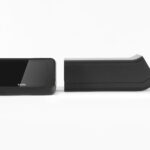GrindoSonic is the proven tool for quality testing, quality surveillance and material characterization in the grinding and abrasives industry and is successfully operated by industry and research institutes & universities alike. With its special focus on grinding materials and over 6 decades of knowledge the system provides easy and fast testing features with comprehensive data collection options in order to design, grade and/or class grinding materials and grinding products.
Destructive testing methods such as 3/4-point bending, ball pressure testing or Zeiss-Mackensen sand blast require sample testing. In contrast the GrindoSonic method allows non-destructive vibrational testing – enabling the industry to either do repeated tests on a single sample, or simply and fast perform 100% quality control testing.
There is hardly any fabrication process with no need for grinding of materials such as rubber, plastics, ceramics, steel etc. Hence grinding material properties such as hardness and strength define the results of the grinding process. The grinding product properties are dependent on grain quality, grain size, grain form, apparent weight, grain resilience, combination of different grains, amount of grain, grain binding, porosity, density and more. Also the heating and curing process of the grinding products have an important influence and may lead to cracks. However, all of the above factors including cracks and micro cracks have an influence on the fundamental vibrations of a grinding product.
In essence: hardness, binding and structure of a grinding product correlate with fundamental frequencies which are – via the GrindoSonic method – caused by a light, elastic and non-destructive impulse. GrindoSonic measures and analyses these vibrations. The vibrational response characterises the test object – meaning GrindoSonic delivers a highly precise frequency spectrum – in other words a “footprint” of a test object and its characteristics. GrindoSonic measurements are not limited by size, form, weight or porosity. The only limiting factor being: the object needs to vibrate sufficiently after excitation – this is for instance not the case with fluids or powders.
Together with integrated formulas for grinding products, fundamental frequencies are used to calculate and determine elastic material properties such as E-modulus (Young’s modulus) or Poisson. In addition internal damping, another important main material property next to rigidity and density, is analysed by GrindoSonic. For quality control, characteristic vibrational footprints of the manufactured product, which are achieved within seconds, are used to class & grade products and ensure consistently good quality over complete production runs.
GrindoSonic has been designed specifically for the grinding industry and for its Research & Development. It can be operated as a single desk-top device in rough production environments or a R&D / quality laboratory without the need of a computer. Or it is integrated into a fully automated in-line testing system. Data is stored and/or transferred via network to the clients data collection and evaluation devices such as computers or PLCs.



